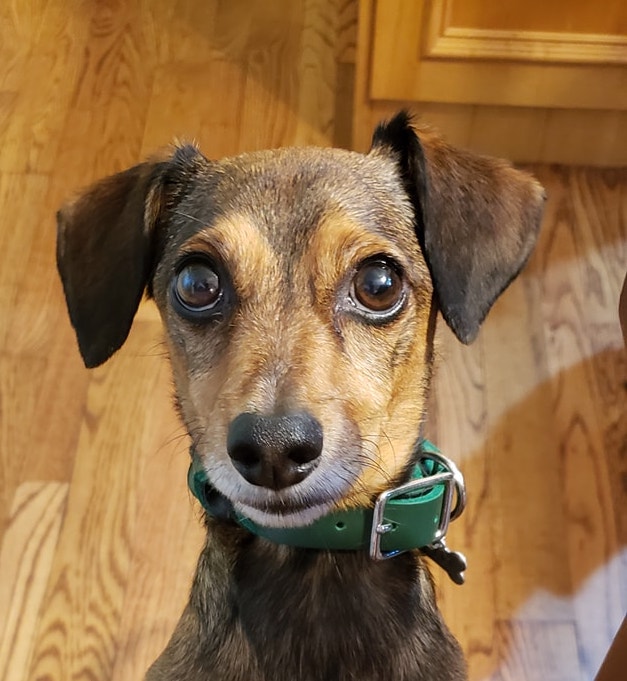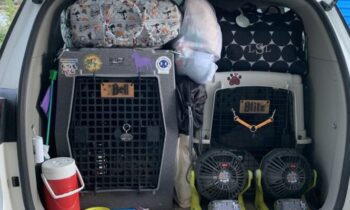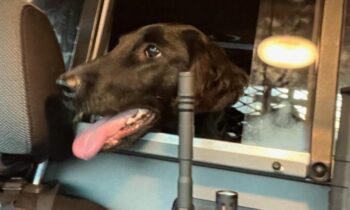

In our most recent blogs, we’ve been discussing the process of adopting a dog from a shelter or rescue organization. Last week, I asked dog professionals about their suggestions for future or recent adopters of rescue dogs. This week, more dog professionals have added their advice and counsel.
Alisha Ardiana (California), dog trainer. If I dropped you off with a new host family in South Korea, you would want to know three things:
▪ Where am I sleeping?
▪ Where is the bathroom?
▪ What’s for dinner?
You would happily follow everyone along.
And after about a month or so, you might possibly volunteer the information:
▪ I actually do not like kimchi.
Dogs are the same way. Establish these three necessities, but don’t be surprised when you start seeing issues and concerns. Lack of behavior is not a sign that the dog enjoys everything you have provided. Take it slow. Avoid all variables.
Get a trainer as soon as you have questions.
Kim Rinehardt (California), owner at The K9 Educator Dog Training. Don’t just assume that a dog listed as “house trained” will know not to potty in a different house.
Wendy Grier A collar and a harness with a separate leash on both is recommended by good rescues.
Jill Gibbs (Montana) Put a collar on right away with tags that have your phone number on them. Some rescue dogs have escaped their previous home or want to get home from your house. My first shelter dog backed out of her collar in the shelter parking lot. [Luckily] she ran through the gate into the fenced area behind the shelter. I had to go get help to remove her from under a vehicle.

Photo by Erin Saywell
Sue Heron (Florida), animal advocacy, animal transport, animal rescue. Give them time—let them decompress.
Lili Chin (California) There is a cool infographic at Decompress For Success.
George Guba (New York), breeder, handling class instructor, dog sports. It can take months for a new dog to settle in. I rescued Dante years ago. He wasn’t abused, but he was neglected, as his life was outside and in his crate. We immediately bonded and I became a foster failure. When he came in, he would immediately go to his crate and refuse to come out. So I would latch his crate while he was out. It took four months to break the habit.
David Bozak (New York), United States Dog Agility Association masters judge. Patience! Let them settle in at the new home and yard before taking them loads of places. Expand their “horizons” slowly—don’t rush it. And treats, lots of treats. I’m also a fan of crate games . . . our crates are always open so the dogs have some place to go where they feel safe.
Jo Jacques (Massachusetts), dog trainer at WiggleBums! Dog-Friendly Training & Behavior Consulting. Don’t expect too much too soon. Let the dog settle in and call the shots regarding touch. This is especially important if you aren’t sure about the puppy’s/dog’s upbringing so far. You should learn to read their signals to see if the type of touch is welcome or scary. If it’s scary, back off and take time to desensitize.
Micha Michlewicz (Maryland) Body language is everything to see how they may be feeling about what’s happening and to guide your choices with them. Body-language references are recommended to look at. Also, reward those desired behaviors! The more they get reinforced, the more those behaviors will happen—and the more that will be instead of undesired behaviors.
Jessica Theisen de Gonzalez (New York), dog-training student, long-time (5+ years) shelter volunteer. Adopters never seem to allow enough time for serious decompression. They don’t fully realize the shock to the system the shelter experience is for dogs. It’s lots of unfamiliar smells, noises, people, other animals. It’s sure tempting to spend a lot of time with your new dog, taking it everywhere, but the best thing to do is just let the dog eat, sleep, rest, with minimal interactions. Long walks for exercise. But it’s as if they are in recovery from the experience and need to hit the reset button. They don’t yet realize they are “home.” No meeting people, other pets; certainly no dog parks. Follow the dog’s lead on timing, but two weeks is a good baseline.
Marjie Alonso (Massachusetts) I have a completely unproven theory that the less contact new adopters have with trainers for the first month, the happier the adopter/dog relationship is. Trainers tend to put all sorts of “shoulds” on owners, as if any of it really matters, and that in turn causes stress on the dog. Once the dog and human have bonded, THEN start training. Things tend to go better.
Kim Rinehardt (California), owner at The K9 Educator Dog Training. It’s funny, because I feel the opposite [of what Marjie said]. In fact, the rescues I work with usually have me out to ease the transition. Then again, my first day’s advice is always “go slow.” I have people build the relationship before we do anything else. But good supportive training does build the relationship, because it helps the dog figure out how to be confident and successful in new surroundings. Just another perspective.
Let the dog take time to adjust. Start with limiting options (use some form of benevolent management) and then offer more and more freedom as the dog becomes more comfortable. Limit the experiences you throw at them in the first couple of weeks. For instance, don’t take them out to an outdoor café or show them off to all of your friends in the first couple of weeks. Remember that you know this is their new home and you are their new forever family, but they just know they’re in a brand-new place with kind strangers. Some dogs can jump right into your family dynamics and lifestyle without skipping a beat, but most need a little time to adjust and figure things out. If you push too far, too fast, you can be setting them up for failure. Take time to learn about your dog, and let the dog take time to learn about you and the new home he’s become part of.
Andrea Burggrabe (Indiana), dog trainer. Go slow. Socialization does not mean forcing dogs to be with people and other dogs. It means observing from a distance and learning that you (the dog) are safe. And it should not be done until the dog has had plenty of time to settle in at home. Remember that the dog is going to take several weeks before it fully decompresses and feels at home.
At first, make sure to do lots of potty breaks and make sure that the dog is given a place that is nice and calm. Help them to decrease stress also with enrichment. I would also play calming music to help set the mood for relaxation. Even though we love to love on our dogs, it is also super important to make sure that we play “hard to get” and let the dog come to us on its own terms. We win over the dog much more quickly that way. It is very likely that the dog is going to make mistakes after arriving. Make sure to use good management to prevent the dog from making mistakes, and not to scold them. Just think what can you do better next time to help them make a different choice and make sure to reward positive behaviors. Help the dog feel safe, meet its needs, enrich its life, and then after that you can work on obedience and training. If you are struggling, reach out to the shelter or rescue, as they have many resources to support you.
Marilyn Marks (Connecticut), owner at Know Better Dog Training. Beware! Unscrupulous rescues abound! Placing dogs with huge behavioral issues, then not being accountable, not even taking the dog back into their rescue. And when they do, adopting it right out again to the next unsuspecting person.
Melissa McCue-McGrath (Massachusetts) author of “Considerations for the City Dog,” dog trainer, host of BewilderBeasts, a podcast. And remember . . . there is no shame if it doesn’t work out for any reason. Anyone who makes you feel bad if things don’t go as planned should be ignored. Look for rescue groups who offer support post-adoption and will take the dog back without judgement if it’s not working out.
Tiffany Copley (Ohio), dog trainer at Central Ohio Muttessori School. Don’t spoil them to make up for their past. You didn’t do that; you have nothing to make up for. The present and the future are what matters.
Em E Wolf (Colorado) I’d suggest you take the time to find the right dog. Don’t be impulsive; learn as much as you can about the dog, its history, possible breed mix, and what those breed traits are. If you’re in an apartment or busy area, a Great Pyrenees bred for thousands of years to alarm-bark might not be a good choice. If you have small kids, I’d hesitate to bring in a herding dog like a heeler who was bred to nip at their charges when they run amok.
Then get a treat pouch, read the Companion Animal Psychology blog, and maybe listen to Pod To The Rescue!



